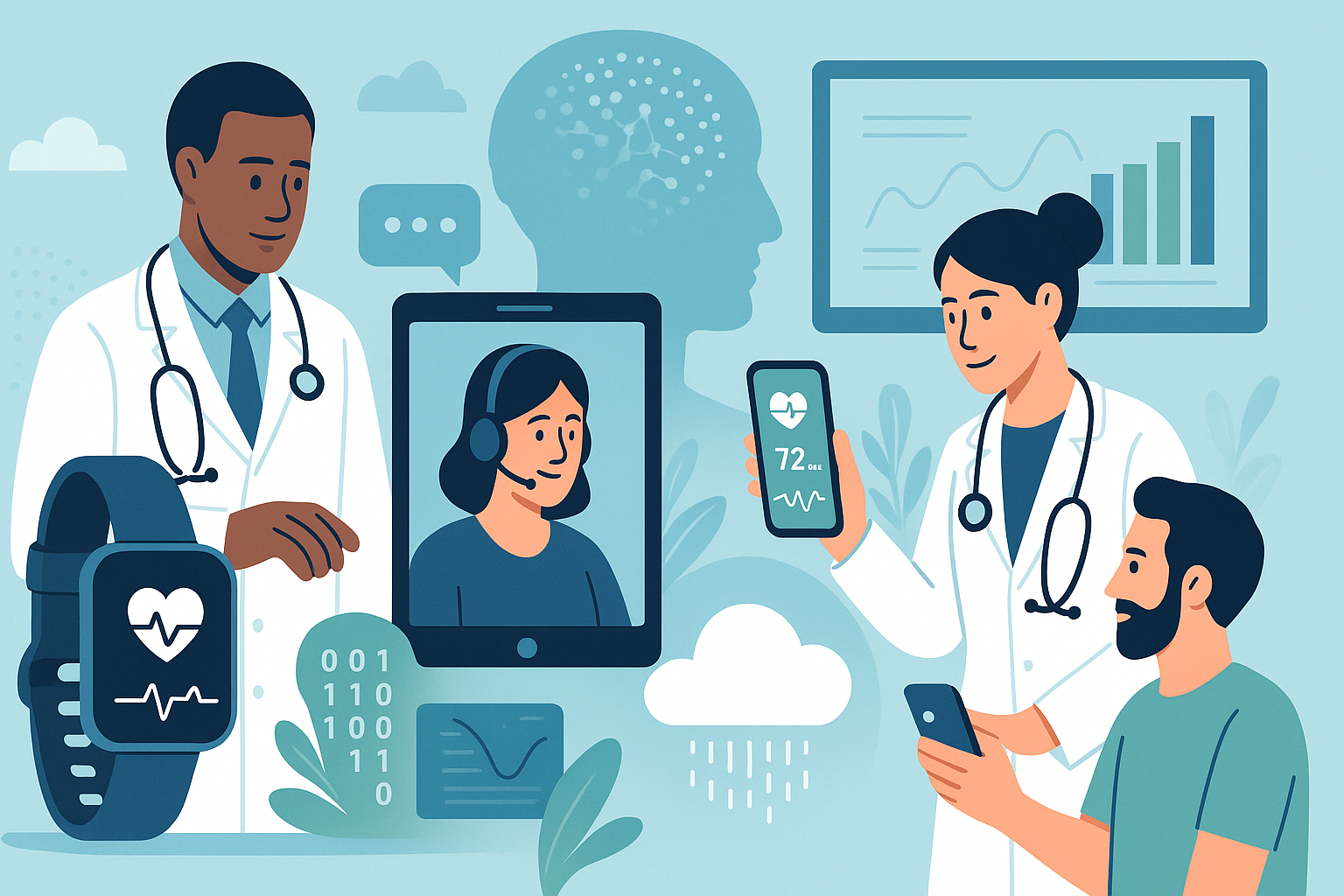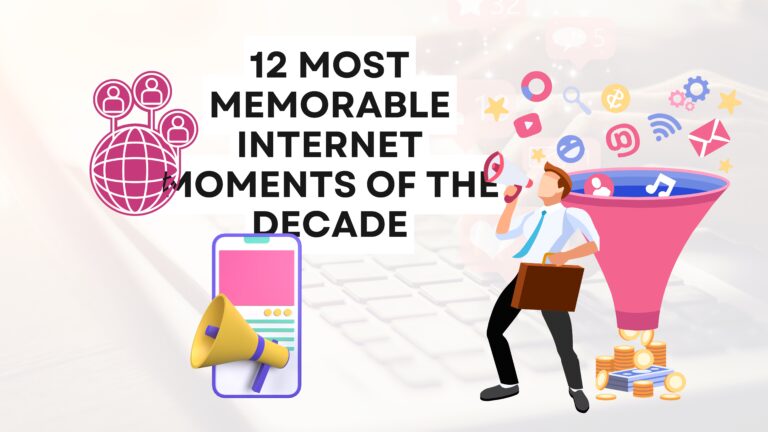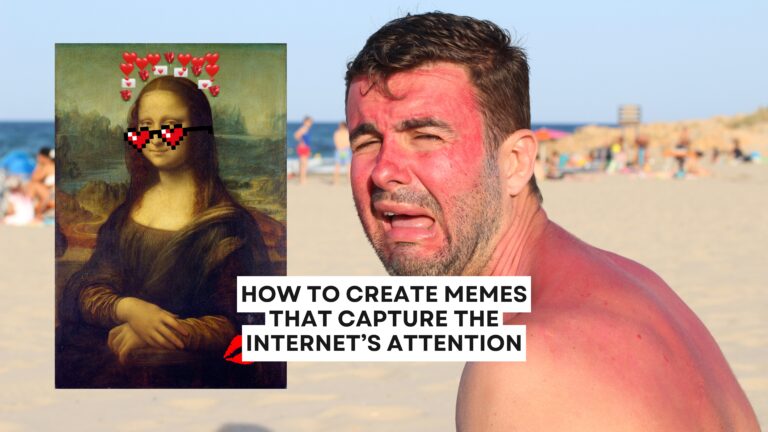It’s 2025 and honestly, the idea of getting healthcare only in person feels… outdated. Like burning CDs. Or, I don’t know, using MapQuest in 2025 (don’t lie—you used it once). The world’s flipped, tilted, and reassembled itself around tech that doesn’t just change how we do healthcare—it redefines what health even means.
We’re talking about systems that monitor your heartbeat in real time, predict strokes before they strike, and even remind you to drink water when you’re way too distracted by life. And while all this sounds kind of robotic—cold, clinical, soulless—it’s actually doing something beautifully human: making care more accessible, more personalized… and less terrifying.
But let’s not sugarcoat it. It’s messy. It’s imperfect. And somehow, that’s the point.
1. Artificial Intelligence: It’s Not Just for Sci-Fi Anymore
AI has officially joined the medical team—and no, it’s not here to steal your doctor’s job (probably). But it’s doing things faster. Cleaner. Sometimes creepily better.
Take diagnostics. There’s an algorithm out there that can detect lung cancer from a CT scan faster than a radiologist. That’s not a slight—it’s a miracle. Machines don’t blink. They don’t get tired. They don’t mistake a smudge for a tumor.
I remember reading about an AI tool catching breast cancer six months before any symptoms showed. Six. Months. That’s the difference between early intervention and—well, something far worse.
Oh, and chatbots? They’re getting weirdly good. I once scheduled an appointment with a bot that had better manners than most people I know. No shade.
2. Telemedicine: The Doctor Will See You… in Your Kitchen
True story: I had a sore throat last year—nothing serious, just that scratchy “am I sick or just dehydrated” kind of thing. Instead of dragging myself to a clinic, I tapped a few buttons and FaceTimed with a doctor while eating toast. In my pajamas.
That’s telemedicine. And yeah, it exploded during the pandemic, but now it’s just—normal. Like ordering takeout, but for your health.
And here’s where it gets powerful: for people in rural areas? The ones who’d have to drive hours just to get a check-up? This is life-changing. Imagine being able to speak to a therapist, a pediatrician, even a cardiologist—without leaving your town, or your home, or your bed.
Plus, no waiting rooms. Bless.
3. Wearables & IoMT: Your Body, But Make It Wi-Fi
Okay, so remember when fitness trackers were just glorified step counters? That’s adorable.
Now? Your smartwatch might be saving your life in the background. Constantly checking your heart rhythm, blood oxygen, sleep cycles—even stress levels (how does it know?!). And it’s not just watches. Patches. Rings. Even smart socks.
I have a friend—Mark—who wears this discreet patch for diabetes management. It not only tracks his glucose levels but sends an alert to his doctor if something’s off. Once, it caught a sudden dip and pinged his phone with a notification: “Eat something now.” His words? “It felt like being haunted—but by someone who cares.”
This is the Internet of Medical Things. Where your body talks to the cloud, and the cloud sends help.
4. Personalized Medicine: One Size No Longer Fits All (Thank God)
This part is wild. Medicine used to be: here’s your pill, hope it works. Now? They can swab your cheek, map your DNA, and tell you which medications your body likes. And which ones it hates.
Imagine a future where no one says, “Side effects may include…” because those side effects are already filtered out for you. It’s not just personalized. It’s precision. Like a tailor-made suit for your cells.
And this isn’t just genetics. It’s big data. Algorithms combing through millions of cases to say, “Hey, patients like you respond better to this.” That’s not guesswork. That’s power.
5. Cloud Computing: Goodbye, Paperwork Purgatory
Let’s be honest: old-school health records were a disaster. Disjointed, duplicated, lost in dusty filing cabinets or weirdly aggressive fax machines.
Now? Cloud-based healthcare systems are cleaning up that mess. Everything—from your bloodwork to your prescriptions to your doctor’s weirdly detailed notes about your feet—is in one place. Secure. Searchable. And ready to share if you move, switch providers, or, you know, forget which meds you’re on.
Doctors collaborate faster. Patients stay in the loop. Nobody has to say “Didn’t you get the referral?” ever again.
Side note: It’s also helping in emergencies. Paramedics can access your records en route. That’s not just convenient. That’s life-saving.
6. AR/VR: Med School Just Got Trippy
Augmented and Virtual Reality might sound gimmicky—but it’s becoming legit useful.
Medical students now practice surgeries in VR. No cadavers. No pressure. Just precision. And AR? Surgeons use it during real operations to “see” inside the body without cutting more than necessary. It’s like X-ray vision, but real—and sterile.
There’s even VR for patients, easing anxiety by immersing them in calming environments during procedures. I mean… if I could get dental work while floating through a virtual forest, I’d sign up yesterday.
7. Predictive Healthcare: Catching Storms Before They Happen
This is where things get really sci-fi. We’re talking about predicting illnesses before symptoms start.
Using AI, wearables, and a ridiculous amount of health data, systems can now forecast risks. “Hey, you’re trending toward hypertension.” Or “You’ve had three poor sleep cycles, a spike in cortisol, and an elevated heart rate—maybe don’t chug three espressos today?”
Imagine your health sending you a warning—like your car does when you need an oil change. Only this time, it’s your body, and the stakes are a lot higher.
This is what turns reactive medicine into preventative care. And it’s going to flip the system inside out.
Final Thoughts (Also: Feelings Are Complicated)
Let’s not pretend this is all roses and robot doctors. There are privacy issues. Tech barriers. Inequities. Moments where your smartwatch gaslights you into thinking you’re dying when you just need a nap.
But despite the chaos—and maybe because of it—technology is quietly making healthcare better. Not perfect. Not foolproof. But better.
It’s faster. Smarter. More humane in ways that are hard to explain. And for once, the future of medicine doesn’t just feel like a cold sterile lab—it feels warm. Real. Like it knows you.
And that? That’s everything.








